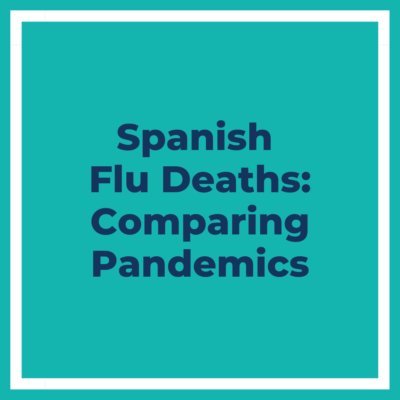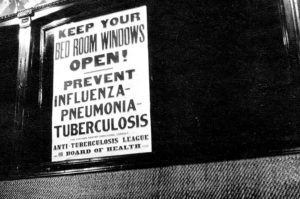
- Flu Facts
Spanish Flu Deaths: Comparing Pandemics

If you know a little history it’s almost impossible to ignore the Spanish flu death toll with the current COVID-19 pandemic. Today we’ll delve into 1918.
We should start out by defining some terms. The ‘Spanish Flu’ is a bit of a misleading term. The flu pandemic of 1918 didn’t start in Spain and it wasn’t any worse in Spain than any other country. In the interest of accuracy, we’ll refer to it as the 1918 flu pandemic in this article. There is a reason it’s commonly called the Spanish flu though, and we’d encourage you to listen to a very detailed podcast from Throughline if you’re interested in learning more about the history.

As the flu spread nationally and internationally it became clear this was more than an epidemic, it was becoming a pandemic. It spread across the Americas and Europe, then on to Asia and Africa until it was on every continent, reaching nearly every community. One feature of the virus was its lethality. Then and now, the flu spread seasonally each year, but this flu spread more quickly and was killing more of the people infected by it.
The flu virus which caused the 1918 pandemic was an H1N1 flu virus with genetics that suggest it originated in birds, then spread to humans. Flu infections (then and now) hit young and old populations hardest. In 1918, the data suggest people who fall outside those age groups (20 – 40) were also hit hard and although we now know much more about the strain from 1918, it’s still not clear why healthy adults in that age range died more frequently than health experts would expect. It’s worth pointing out that the pandemic also took place during World War I, which meant service-age men and women were experiencing the stress, wounds, and death of war at the same time as they were exposed to this virulent strain of influenza, which almost certainly skewed the data. The combination of a pandemic and a vast military conflict means many millions (15 – 22 million by some estimates) died in WWI, many of whom wouldn’t be expected to die in peacetime.
Unusual for the spread of flu, the 1918 flu had three waves, essentially circling the globe again and again. There were big rises in infection during the spring, summer, and winter of 1918. It took the better part of two years for flu infections and deaths to fall back to what we consider normal for a winter flu season.

It’s possible that the 1918 flu could have been a pandemic even with modern vaccination tools available (it was a particularly deadly strain) but without the tools we have today (vaccination and antibiotics). The 1918 flu was estimated to have killed 50 million people worldwide and about 675,000 in the United States. We now have both vaccines and antibiotics for the treatment of secondary infections like flu-related pneumonia.
By the time the current COVID-19 pandemic fades to an endemic virus like the flu and other coronaviruses, it may rival the flu pandemic of 1918 in terms of infections and deaths. There are lessons to be taken from both pandemics. First, we have learned much about how disease spreads and how to mitigate in the early weeks and months of a pandemic, things that were less well known in 1918.
Second, we’ve taken huge strides in our understanding of vaccines, antibiotics, and antiviral treatments in the last 100 years. The immunity that comes from vaccines and the interventions available to seriously ill patients were virtually unknown in the treatment of influenza at the time.
Finally, it’s worth noting that even with all our knowledge of vaccines, disease prevention, and more effective treatments, we can’t always prevent an epidemic or pandemic, but we can all do our part to avoid spreading illness and preventing the most serious outcomes of infection by staying up to date on vaccinations and practicing good hygiene.
Sources:
https://www.npr.org/2020/03/25/821597079/1918-fl
https://www.cdc.gov/flu/pandemic-resources/1918-pandemic-h1n1.html
https://www.cdc.gov/flu/pandemic-resources/1918-commemoration/three-waves.htm
https://covid.cdc.gov/covid-data-tracker/#datatracker-home
https://www.healthline.com/health/worst-disease-outbreaks-history
https://www.cdc.gov/flu/pandemic-resources/1918-commemoration/historical-images.htm


